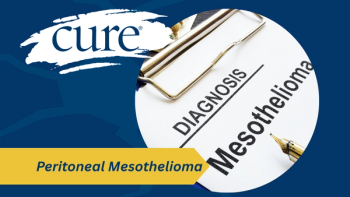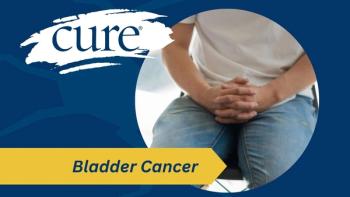
Study Examines Combination Regimen for Treating CINV During and After Chemo
A recent clinical trial is examining the combination regimen of netupitant plus palonosetron (NEPA), with hopes that it can curb nausea and vomiting both before and after chemotherapy in patients with peripheral T-cell lymphoma, Hodgkin lymphoma, mantle cell lymphoma and diffuse large B-cell lymphoma.
Chemotherapy-induced nausea and vomiting (CINV) is a major issue in patients with blood cancers who are undergoing chemotherapy before receiving hematopoietic stem cell transplantation. A recent clinical trial led by Joseph Bubalo, Pharm.D., a clinical pharmacist at Oregon Health & Science University, is examining the combination regimen of netupitant plus palonosetron (NEPA), with hopes that it can curb nausea and vomiting both before and after chemotherapy in patients with peripheral T-cell lymphoma, Hodgkin lymphoma, mantle cell lymphoma and diffuse large B-cell lymphoma.
Bubalo recently sat down with OncLive, a sister publication of CURE, at the Transplantation and Cellular Therapy Meetings of ASBMT and CIBMTR, to discuss his findings to-date.
OncLive: Can you give an overview of chemotherapy-induced nausea and vomiting, and your work on the topic?
Bubalo: I have a phase 2 study of a therapy to prevent chemotherapy-induced nausea and vomiting. The conditioning regimen, as it's called, prior to stem cell transplantation, gets generally high doses of chemotherapy with or without total body radiation. And these combinations can put patients at very high risk for vomiting. If not that, significant nausea, both during chemotherapy and for days after.
Can you explain your study?
This study is looking at a combination of netupitant and palonosetron, that's an NK1 inhibitor plus a 5HG3 inhibitor. These drugs are being used for both acute and delayed nausea prophylaxis. The netupitant/palonosetron—or NEPA as it's called–is a unique combination in that both agents are in a single capsule. They're both long-acting and they have only been really used in single-day chemotherapy. This is the first attempt to use it for chemotherapy that goes on for multiple days.
The BEAM (carmustine, etoposide/cytarabine, melphalan) regimen that we're treating is a six-day chemotherapy regimen. We were experimenting to find a combination that actually worked over a six-day period of chemotherapy and then for the days afterward as well.
The trial is a phase 2, so we're treating everybody. There's no placebo control. It was our attempt to figure out what the right regimen was, and whether or not it would be effective. We did a 13-patient pilot group and if there were fewer than three complete responses in that pilot, then we were not going to proceed. However, we met that goal and we're going to proceed to a full enrollment of 43.
The [recently presented] poster looks at the first 21 patients, so it's an interim analysis. The NEPA capsule that is given on day -6, which is the first day of chemotherapy, day -4, which is the third day, and then day -1, which is the sixth day. We measure the benefit and outcome through that chemotherapy period and then for five days afterward.
What were the results?
For this combination, I mentioned along with the dexamethasone, which is a standard antiemetic prophylaxis, we looked at it both in the acute phase during chemotherapy and then the delayed phase, days 0 through +4, and then kind of the whole phase. Currently, we had about a third of the patients, 30%, who had a complete response, which is basically no vomiting and no rescue therapies. The rest of the patients, 70%, had a major response. This could have been a single vomiting episode on one day, or it could have been rescue medication use, or it could have been significant nausea, even if there was no vomiting.
If you look at just the chemotherapy phase, we've had no vomiting events at all. That has been a huge success to not have any emesis in the first 21 patients during the time when they're actually getting chemotherapy.
We're still seeing significant nausea, grade 1 and 2, especially as we get farther after the chemotherapy is complete, starting about two to three days after the chemotherapy, most of the patients are starting to feel GI symptoms, and we're not exactly sure whether that's nausea or the first signs of GI effects from the six days of chemotherapy, because they're now eight or nine days out in most of those individuals. We're still trying to figure out the delayed phase. But during chemotherapy we're seeing very little rescue use and actually no vomiting, which is the first step to finding the right combination. So far, we're very happy with how we've dosed this compound.
This article originally appeared on





